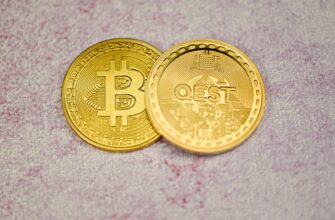SWISX Emerging Markets: Understanding the Fund & Smart Alternatives
When investors search for “SWISX emerging markets,” they’re often mixing two distinct concepts. SWISX (Schwab International Index Fund) actually focuses on developed international markets, not emerging economies. This comprehensive guide clarifies SWISX’s true composition, explains why emerging markets deserve separate consideration, and reveals top alternatives for targeted exposure to high-growth economies.
What Exactly is the SWISX Fund?
SWISX tracks the FTSE Developed ex-US Index, providing low-cost access to established markets like Japan, the UK, and Germany. Key features include:
- Asset Class: International large-cap stocks
- Expense Ratio: Ultra-low 0.06%
- Top Holdings: Nestlé, Toyota, Samsung Electronics
- Emerging Markets Exposure: Less than 1% of portfolio
While excellent for developed market diversification, SWISX won’t deliver meaningful exposure to emerging economies.
Why Emerging Markets Deserve Your Attention
Emerging markets (EM) represent rapidly growing economies like China, India, and Brazil. They offer unique advantages:
- Growth Potential: EM GDP growth consistently outpaces developed nations
- Demographic Dividends: Younger populations drive consumption
- Portfolio Diversification: Low correlation with US stocks
- Innovation Hubs: Leadership in fintech and renewable energy
Top SWISX Alternatives for Emerging Markets Exposure
Consider these specialized funds for authentic EM investments:
- SCHE (Schwab Emerging Markets Equity ETF)
- 0.11% expense ratio
- 1,500+ stocks across 20+ countries
- VWO (Vanguard FTSE Emerging Markets ETF)
- 0.08% expense ratio
- Heavyweight in Taiwan and China
- IEMG (iCore MSCI Emerging Markets ETF)
- 0.14% expense ratio
- Includes small-cap stocks for broader exposure
Building Your Emerging Markets Strategy
Implement EM investments wisely with these steps:
- Determine Allocation: Most experts recommend 5-15% of portfolio
- Choose Vehicles: Blend ETFs and mutual funds for cost efficiency
- Rebalance Quarterly: Maintain target allocation through market cycles
- Dollar-Cost Average: Invest fixed amounts regularly to reduce timing risk
Emerging Markets: Risks vs. Rewards
Understand these critical trade-offs:
- ✓ Reward: Higher long-term return potential
- ✗ Risk: Currency volatility and political instability
- ✓ Reward: Exposure to rising middle-class consumption
- ✗ Risk: Less transparent regulatory environments
FAQ: SWISX and Emerging Markets
Q: Does SWISX include any emerging markets?
A: Less than 1% of SWISX’s holdings are in emerging economies. It’s primarily developed markets.
Q: What percentage of my portfolio should be in emerging markets?
A: Most advisors suggest 5-15%, depending on risk tolerance and investment horizon.
Q: Are emerging markets ETFs riskier than SWISX?
A: Yes, EM funds typically show higher volatility but offer greater growth potential over 10+ year periods.
Q: Can I hold SWISX and emerging markets funds together?
A: Absolutely. Combining SWISX (developed markets) with an EM fund creates comprehensive international exposure.
Q: Which has lower fees: SWISX or emerging markets ETFs?
A: SWISX (0.06%) has slightly lower fees than top EM ETFs (0.08-0.14%), but all are cost-efficient options.
While SWISX remains an excellent tool for developed market exposure, investors seeking emerging markets growth should consider dedicated EM funds. By understanding this distinction and implementing strategic allocations, you can harness global opportunities while managing risk effectively.








